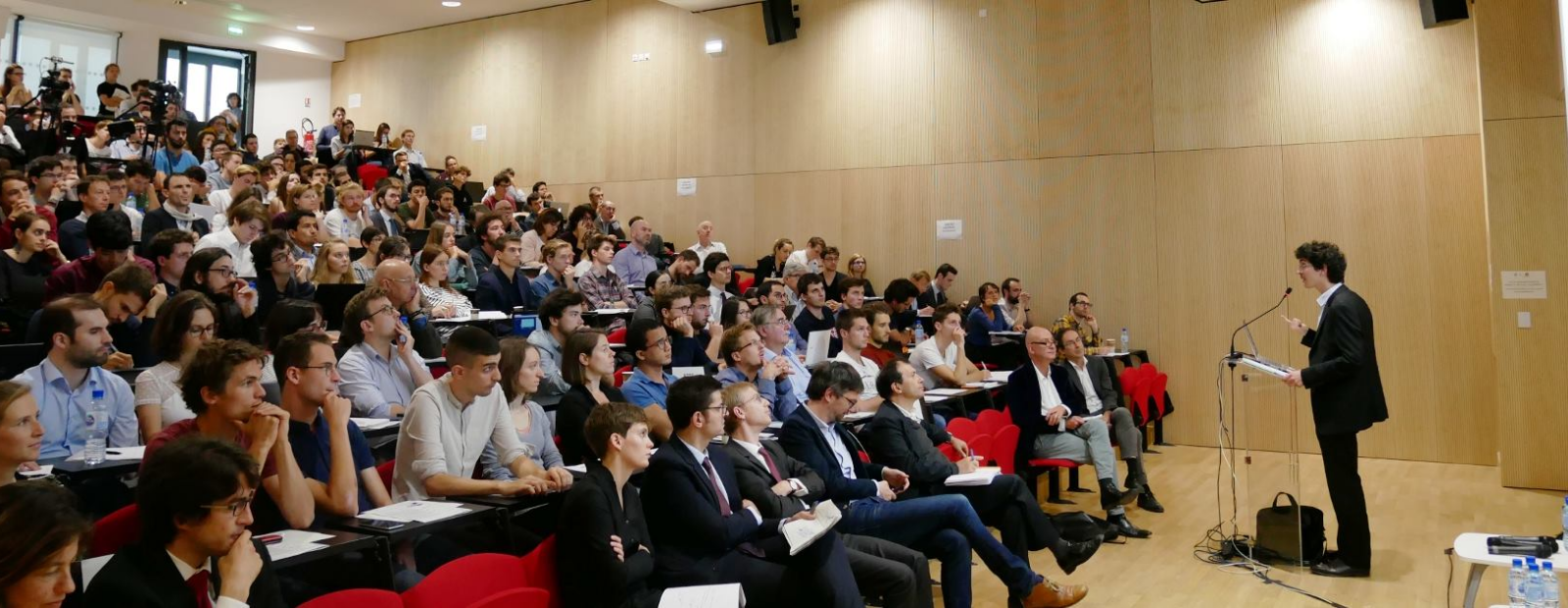Publié en

Philippe Gagnepain
Professeur titulaire d'une chaire à PSE et porteur de la Chaire New Deal Urbain
CV EN ANGLAIS- Professeur
- Université Paris 1 Panthéon-Sorbonne
- Chercheur associé à la Chaire New Deal Urbain et à la Chaire Soutenabilité de la mobilité longue distance.
- Dynamiques industrielles/innovation
- Economie des transports
- Politiques de la concurrence
- Théorie des contrats et des mécanismes incitatifs
Adresse :48 boulevard Jourdan,
75014 Paris, France
Onglets
- Professor, Paris School of Economics-Université Paris 1
- “Collusion in Bidding Markets: The Case of the French Public Transport Industry“, PSE working paper, 2025, with David Martimort.
- “Access pricing and regulation in international rail transport“, PSE working paper, 2025, with Francis Bloch.
- “The Effect of Public Transport Pricing Policy: Experimental Evidence“, PSE working paper, 2024, with Sébastien Massoni, Alexandre Mayol, and Carine Staropoli.
- “Strategic uncertainty and market size: An illustration on the Wright amendment”, Revue Economique, 73, 2022, with Stéphane Gauthier. FRENCH version.
- “Absorptive Capacity, Knowledge Spillovers and Incentive Contracts”, International Journal of Industrial Organization, 82, 2022, with Luis Aguiar.
- “An assessment of Nash equilibria in the airline industry”, PSE working paper, 2020, with Alexandra Belova and Stéphane Gauthier.
-
Contract Efficiency in Public Transport Services. Planned for publication in the Encyclopedia of Transport edited by Roger Vickerman, Elsevier, with Marc Ivaldi.
-
“Gouvernance des grands projets d’infrastructure, une revue de la littérature théorique”, dans JC Prager (éditeur), Le Grand Paris Express, enjeux économiques et urbains, Economica, 2019, with Francis Bloch and Marc Ivaldi.
- “Application de l’économie des contrats et des incitations : le cas de la commande publique”, dans JC Prager (éditeur), Le Grand Paris Express, enjeux économiques et urbains, Economica, 2019, with Francis Bloch and Marc Ivaldi.
- “European cooperative R&D and firm performance: Evidence based on funding differences in Key Actions“, International Journal of Industrial Organization, 53, 2017, with Luis Aguiar. APPENDIX
- “Economic efficiency and political capture in public service contracts“, Journal of Industrial Economics, 65, 2017, with Marc Ivaldi.
- “Merger guidelines in bidding markets“, Revue Economique, 67, 2016, 67-78, with David Martimort.
- “Merger analysis and public transport service contracts”, with Marc Ivaldi and Chantal Latgé-Roucolle, in Thomas K. Cheng, Ioannis Lianos and D. Daniel Sokol (editors), Competition and the State, Stanford University Press, 2014.
- “The cost of contract renegotiation: Evidence from the local public transport“, American Economic Review, 103(6), with Marc Ivaldi and David Martimort. APPENDIX
- “The industrial organization of competition in local bus services”, Handbook of Transport Economics, Edward Elgar, De Palma, Lindsey, Quinet, and Vickerman (eds), 2011, with Marc Ivaldi and Catherine Vibes.
- “The effects of airline alliances : What do the aggregate data say ?”, Journal of the Spanish Economic Association : SERIEs, 1, 2010, 251-276, with Pedro Marin.
- “Renégotiation de contrats dans l’industrie du transport urbain en France”, Revue Economique, 60, 2009, 927-947, with Marc Ivaldi and David Martimort.
- “Entry, Costs Reduction, and Competition in the Portuguese Mobile Telephony Industry”, International Journal of Industrial Organization, 25, 2007, with Pedro Pereira.
- “Evaluating Rent Dissipation in the Spanish Football Industry”, Journal of Sport Economics, 8, 2007, with Guido Ascari.
- “Regulation and Incentives in European Aviation”, Journal of Law and Economics, 49, 2006, with Pedro Marin.
- “Spanish Football”, Journal of Sport Economics, 7, 2006, with Guido Ascari.
- “Incentive Regulatory policies : The Case of Public Transit Systems in France”, Rand Journal of Economics, 33, 2002, with Marc Ivaldi.
- “Stochastic Frontiers and Asymmetric Information Models”, Journal of Productivity Analysis, 18, 2002, with Marc Ivaldi.
- “La nouvelle théorie de la régulation des monopoles naturels : fondements et tests”, Revue Française d’Economie, 4, 2001.
- “Asymétries d’information et richesse immatérielle de l’entreprise : Mesure microéconométrique”, Revue Française d’Economie, 3, 2002, with Marc Ivaldi.
- “Structures productives de l’industrie du transport urbain et effets des schémas réglementaires”, Economie et Prévision, 135, pp 95-107, 1998.
Publications HAL
-
Collusion in Bidding Markets: The Case of the French Public Transport Industry Pré-publication, Document de travail
-
Access pricing and regulation in international rail transport Pré-publication, Document de travail
Publié en
-
The Effect of Public Transport Pricing Policy: Experimental Evidence Pré-publication, Document de travailAuteur : Alexandre Mayol, Sébastien Massoni
Publié en
-
Incertitude stratégique et taille de marché: le cas de l’amendement Wright Article dans une revueRevue : Revue Economique
Publié en
-
Absorptive capacity, knowledge spillovers and incentive contracts Article dans une revueRevue : International Journal of Industrial Organization
Publié en
-
Strategic uncertainty and market size: An illustration on the Wright amendment Pré-publication, Document de travail
Publié en
-
Absorptive Capacity, Knowledge Spillovers and Incentive Contracts Pré-publication, Document de travail
Publié en
-
An assessment of Nash equilibria in the airline industry Pré-publication, Document de travail
Publié en
-
European cooperative R&D and firm performance: Evidence based on funding differences in key actions Article dans une revueRevue : International Journal of Industrial Organization
Publié en
-
Economic Efficiency and Political Capture in Public Service Contracts Article dans une revueRevue : Journal of Industrial Economics
Publié en
